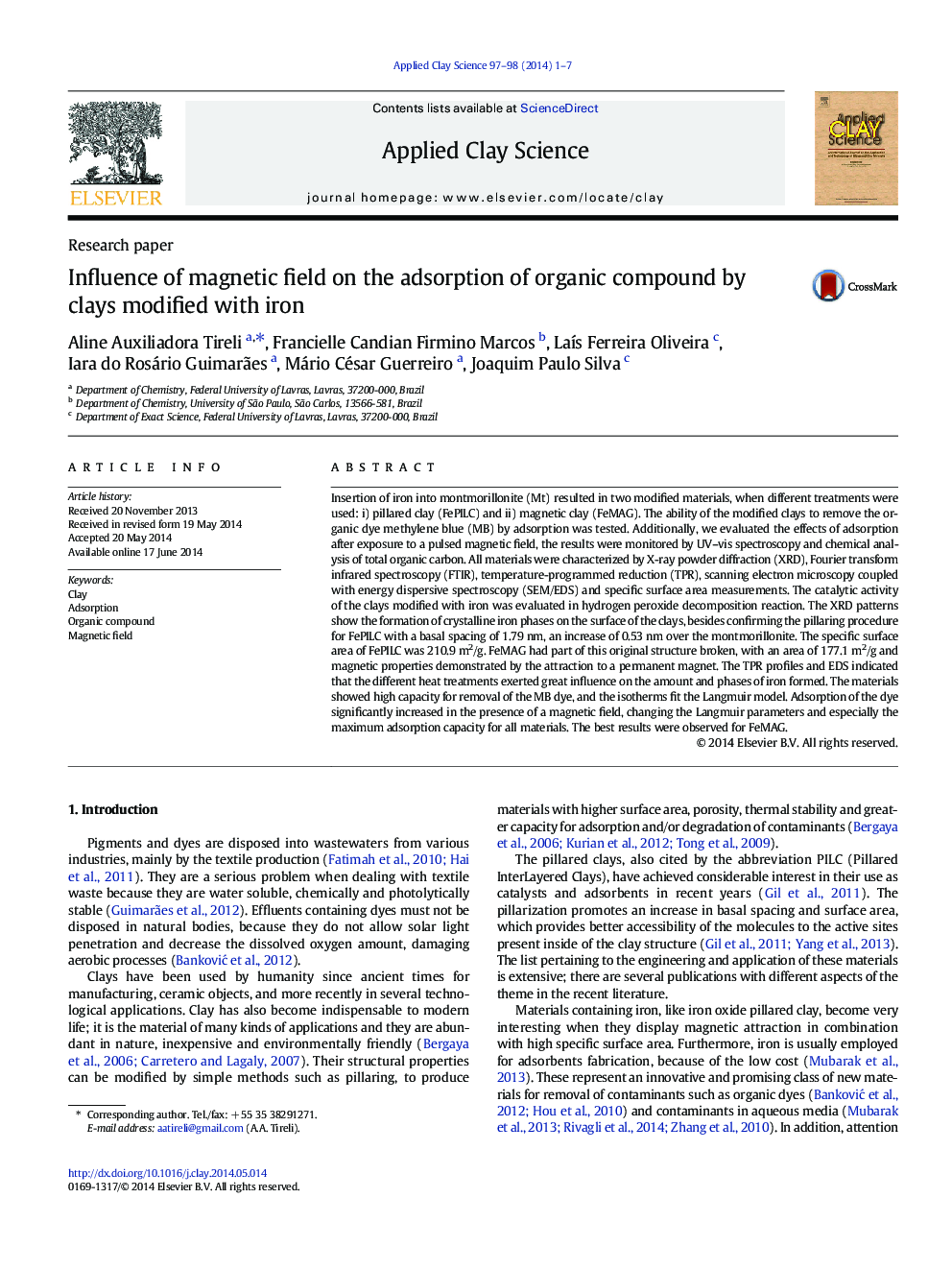| Article ID | Journal | Published Year | Pages | File Type |
|---|---|---|---|---|
| 1694649 | Applied Clay Science | 2014 | 7 Pages |
•Rapid synthesis of magnetic clay with maghemite iron phase•High removal of methylene blue by adsorption process•Organization of magnetic particles improvement in the adsorption with magnetic field
Insertion of iron into montmorillonite (Mt) resulted in two modified materials, when different treatments were used: i) pillared clay (FePILC) and ii) magnetic clay (FeMAG). The ability of the modified clays to remove the organic dye methylene blue (MB) by adsorption was tested. Additionally, we evaluated the effects of adsorption after exposure to a pulsed magnetic field, the results were monitored by UV–vis spectroscopy and chemical analysis of total organic carbon. All materials were characterized by X-ray powder diffraction (XRD), Fourier transform infrared spectroscopy (FTIR), temperature-programmed reduction (TPR), scanning electron microscopy coupled with energy dispersive spectroscopy (SEM/EDS) and specific surface area measurements. The catalytic activity of the clays modified with iron was evaluated in hydrogen peroxide decomposition reaction. The XRD patterns show the formation of crystalline iron phases on the surface of the clays, besides confirming the pillaring procedure for FePILC with a basal spacing of 1.79 nm, an increase of 0.53 nm over the montmorillonite. The specific surface area of FePILC was 210.9 m2/g. FeMAG had part of this original structure broken, with an area of 177.1 m2/g and magnetic properties demonstrated by the attraction to a permanent magnet. The TPR profiles and EDS indicated that the different heat treatments exerted great influence on the amount and phases of iron formed. The materials showed high capacity for removal of the MB dye, and the isotherms fit the Langmuir model. Adsorption of the dye significantly increased in the presence of a magnetic field, changing the Langmuir parameters and especially the maximum adsorption capacity for all materials. The best results were observed for FeMAG.
Graphical abstractFigure optionsDownload full-size imageDownload as PowerPoint slide
